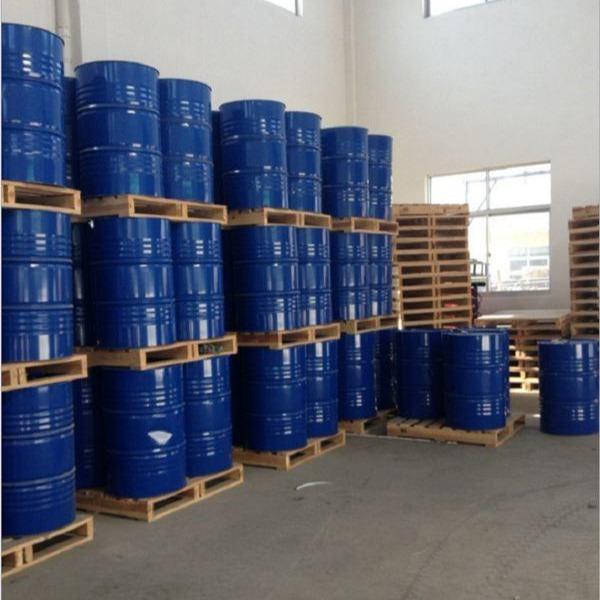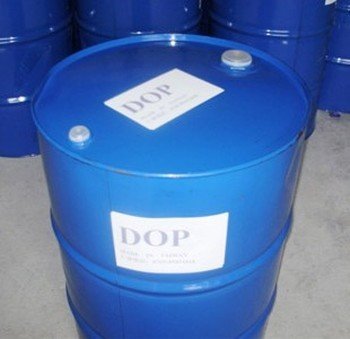-

Butyl acetate
Butyl acetate is a carboxylic acid ester synthetic fragrance, also known as butyl acetate. It is a colorless transparent liquid with a strong fruity aroma. It can be mixed with ethanol and ether at will, can be dissolved in most organic solvents, and is slightly soluble in water. The solubility in water is 0.05g. Its vapor has a weak anesthetic effect, and the allowable concentration in the air is 0.2g/l. This product has a strong fruity aroma. After dilution, it has a pleasant pineapple and ...Read more -

Ethyl acetate
Physical and chemical properties Methyl acetate, chemical formula CH3COOCH3. Molecular weight 74.08. Colorless, flammable liquid with chloroform odor. Spicy. Volatile. Naturally found in grapes and bananas. Melting point -98.1℃, boiling point 57℃ (101.3325kPa), relative density 0.9330, refractive index 1.3595. Soluble in ethanol, ether, water, acetone, benzene, chloroform. Soluble in water up to 24% at 20℃. Can dissolve many metal salts, and produce CO2, H2 and CO by ultraviolet irradiation. ...Read more -

Methyl acetate
Physical and chemical properties: Methyl acetate, chemical formula CH3COOCH3. Molecular weight 74.08. Colorless, flammable liquid with chloroform odor. Spicy. Volatile. Naturally found in grapes and bananas. Melting point -98.1℃, boiling point 57℃ (101.3325kPa), relative density 0.9330, refractive index 1.3595. Soluble in ethanol, ether, water, acetone, benzene, chloroform. Soluble in water up to 24% at 20℃. Can dissolve many metal salts, and produce CO2, H2 and CO by ultraviolet irradiation....Read more -

Acetic acid
Acetic acid, commonly known as acetic acid (AcOH), is named after the main component of vinegar and is one of the most important fatty acids. It generally exists in many plants in free form or in the form of esters in nature. Molecular formula CH3COOH. The brewing and use of vinegar has a history of thousands of years. There are records of vinegar making in ancient China. However, concentrated acetic acid was successfully developed by Stahl in 1700. Pure acetic acid is a colorless liquid with...Read more -

Chlorinated paraffin
Product characteristics and uses: Chlorinated paraffin is a mixture of chlorinated derivatives formed by free radical reaction of straight-chain alkanes with different carbon numbers from C10 to C30 with chlorine. The general product contains 40% to 70% chlorine. At room temperature, the chlorine content of 40% to 52% is a light yellow viscous liquid; 54% to 60% is a viscous yellow semi-solid; 70% is a brittle resinous solid. The one with high chlorine content is preferred, with low price and...Read more -

Epoxidized soya bean oil
Product description: Epoxidized soybean oil is a chemical product made from soybean oil after oxidation treatment. It is a light yellow viscous oily liquid at room temperature. It is a widely used non-toxic plasticizer and stabilizer for polyvinyl chloride: it has good compatibility with PVC resin, low volatility and low migration. It has excellent thermal stability and light stability, good water resistance and oil resistance, can give products good mechanical strength, weather resistance an...Read more -

DINP
Uses: Diisononyl phthalate (DINP for short) is a transparent oily liquid with a slight odor. This product is a general-purpose primary plasticizer with excellent performance. This product has good compatibility with PVC and will not precipitate even if used in large quantities; its volatility, migration, and non-toxicity are all better than DOP, and it can give the product good chemical book light resistance, heat resistance, aging resistance and electrical insulation performance, and its com...Read more -

DIBP
Chemical properties: Colorless transparent liquid with a slight aromatic odor. Solubility in water is 0.05g/L (25℃). Compatible with various cellulose and polyvinyl chloride, polystyrene, polyvinyl acetate and other resins. Uses: 1. Mainly used as a polyvinyl chloride plasticizer, widely used in plastics, rubber, paints, lubricants, emulsifiers and other industries. It can be used as a plasticizer for cellulose resins, vinyl resins, nitrile rubber and chlorinated rubber. The plasticizing effe...Read more -

DBP
Dibutyl phthalate, also known as dibutyl phthalate or dibutyl phthalate, is a colorless, transparent, oily liquid with a specific gravity of 1.045 (21°C) and a boiling point of 340°C. It is insoluble in water, and has low water solubility and volatility, but is easily soluble in organic solvents such as ethanol, ether, acetone and benzene, and can also be miscible with most hydrocarbons. Dibutyl phthalate (DBP), dioctyl phthalate (DOP) and diisobutyl phthalate (DIBP) are the three most common...Read more -

DOTP
Dioctyl terephthalate (DOTP) is a high-performance main plasticizer for polyvinyl chloride (PVC) plastics. Compared with the currently commonly used di-2-ethylhexyl phthalate (DOP), it has the advantages of heat resistance, cold resistance, low volatility, anti-extraction, flexibility and good electrical insulation performance. It shows excellent durability, soap water resistance and low-temperature flexibility in Chemicalbook products. Due to its low volatility, the use of DOTP can fully mee...Read more -

DOP
9,10-Dihydro-9-oxa-10-phosphaphenanthrene-10-oxide, also known as 9,10-dihydro-9-oxa-10-phosphaphenanthrene-10-oxide (DOPO) Chemicalbook, is an important new reactive phosphorus-containing flame retardant. Flame retardants synthesized from DOPO and its derivatives have the characteristics of high efficiency, halogen-free, smoke-free, non-toxic, non-migrating, and long-lasting flame retardancy.Read more -
Phthalic anhydride
Phthalic anhydride, also known as phthalic anhydride, is an important chemical raw material. The main use of phthalic anhydride in my country is to produce phthalate plasticizers, followed by alkyd resins and amino resin coatings; phthalic anhydride can be used in the production of unsaturated polyesters and in the dye industry to synthesize anthraquinone.Read more





